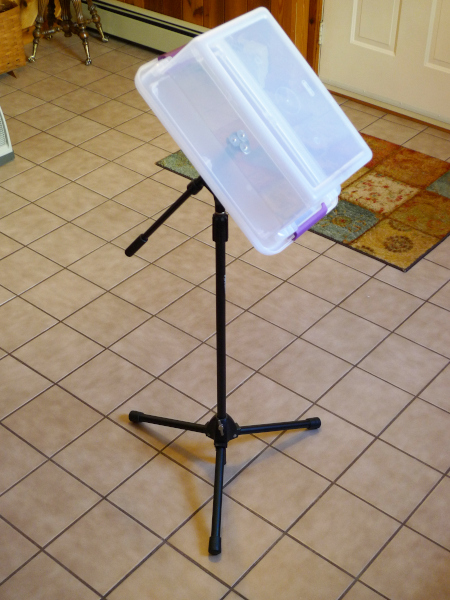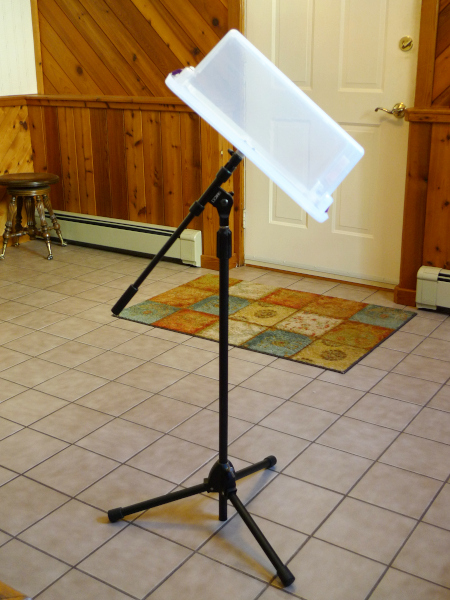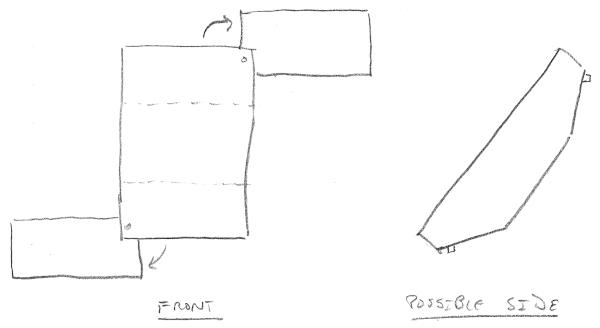D-Lev Prototype II
I swore to Roger (and myself) that I'd finally get around to using the beautiful boards he so generously sent me ages ago. Today's the day! Well, a couple of days ago were the day! Whenst I purchased an enclosure to expand my "Tupperware party" - but today it's actually falling together.
It began in the usual way, a search for "plastic box" on Amazon, eBay, Google, Duck duck go, etc. which resulted in pretty much nothing, so it ended as usual too. I wanted a main box that was longer than the one the first prototype is built in (which is a shoe box really) but everything that was longer was waaaay longer, like a meter or more, designed to hold rolls of holiday wrapping paper and the like. Boxes that were just somewhat longer than a shoe box were wider as well, which I wasn't really looking for, but in the end I decided to take this baby home for a cool $3 USD or so:
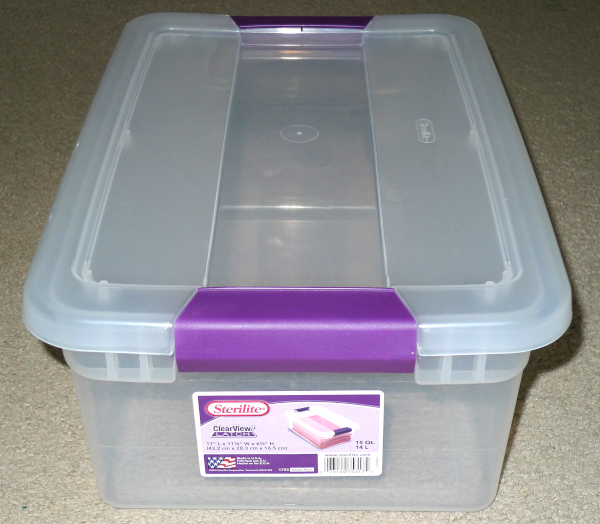
It's a 15 Qt / 14 L "clear" (milky really) storage container from Sterilite, UPC 073149753175, made in the US of A. It says the dimensions are 17" x 11 1/8" by 6 1/2" (432mm x 283mm x 165mm). Gotta have the "clear" to easily mount things that display without cutting holes.
Prototyping enclosures should be "beautifully ugly" and inexpensive so you have zero qualms about drilling a hole here or there, and zero qualms about abandoning those holes, or even the entire box, when you feel the need to try something else out. If the enclosure is too expensive or too pretty or too close to the finished product, you will necessarily think ten times about drilling a hole, and wince when you finally screw up the courage to do it, and ergonomic experimentation (and perhaps the entire project) will grind to a halt. Ideal prototyping enclosures make terrible show-and-tell subjects (and I feel a little bad showing them to the world like this) but they're really not intended for that. They're just there to cheaply hold all the stuff together and that's it. Anything more and it just gets in your way.
The lid on this comes entirely off, and that's where I'm going to mount the mike stand flange, and the whole thing will then be upside down. You want a removable lid rather than a hinged lid, otherwise you'll be fighting it and having it flop around when you're inside trying to work on the innards.
I dug Roger's boards out, hooked up the tuner and encoders, and hooked the main board up to a USB serial cable which also supplies 5V.
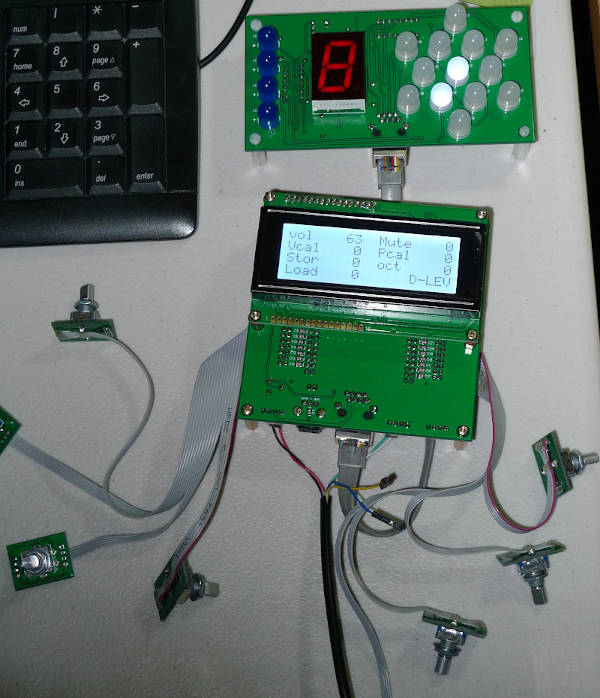
Et voila! It's alive! That was too easy (because Roger did all the work). I pumped it up with the very latest software load via the librarian software, but still need to update the FPGA load as well to get the new dither logic working.
The LCD is really, really bright, much brighter than the LCD backlight on my first prototype. I adjusted the LCD contrast trimmer and it looks fine and all, but I can't seem to get that "you've gone too far" region where the off pixels are turning on - both ends of the adjustment are washed out. The contrast pot has 3.3V across it, hmm.
The encoders seem much more positive than the ones on my first prototype, though maybe some of that is them loosening up over time with use? These things aren't rated for a very long a life. But these are really crisp feeling and definite in their action.
I wasn't looking for wider box, but it might be interesting to have the bases of the antennas start out farther apart, and have more room inside and area on the control panel for speakers and such. It's funny how many things housing dictates with an iron fist, even the imagination. I plan to first try coils inside with paddle plates. Due to a lack of height in this box, I think the tuner will be going in a separate enclosure on the top, probably a sandwich container (why stop now?).
Anyway, this one should be much more robust, and therefore able to travel better. My first prototype is fairly fragile so I've never really taken it anywhere, not even upstairs to the music room.



